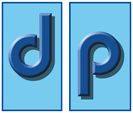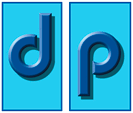Digital Transformation and Automation in the UK Printing Industry
The UK printing industry has been rapidly evolving over the past few years. With the advent of digital transformation and automation, technology continues to advance and customer expectations continue to grow. It has become more important than ever for companies in the printing industry to adopt digital transformation and automation to stay relevant and competitive in the market.
Productivity
Digital transformation is essentially the integration of digital technology into all areas of a company’s operations. Ultimately leading to fundamental changes in how the company operates and delivers value to its customers. Automation, on the other hand, refers to the use of technology to perform tasks that were once done manually, leading to increased productivity and efficiency.
Digital transformation
Let’s take a closer look at some of the pros and cons of digital transformation and automation in the UK printing industry:
Pros:
- Digital transformation and automation can lead to increased efficiency across all aspects of the printing process, from design to final production.
- Automation can help to reduce costs associated with manual labour, additionally leading to cost savings which can be passed on to customers.
- Digital technology can help to improve the quality of finished products. This enables more precise and accurate colour control, leading to more consistent and higher quality prints.
- Online ordering systems and automated workflows. These lead to faster turnaround times and improved customer satisfaction.
- Adopting digital solutions and automation. Printing companies stay relevant and competitive in a rapidly evolving market.
Cons:
- The upfront costs associated with implementing digital solutions and automation can be high. This can deter some companies from making the move.
- Staff may require additional training to be able to effectively use new technology and complete tasks in an automated environment.
- Implementation of automation may lead to job losses. Tasks that were once done manually are now being done by machines.
Competitive advantage
Despite these potential drawbacks, it’s clear that digital transformation and automation are essential if printing companies in the UK want to stay competitive in today’s market. With the advent of digital technology, it’s now possible for printing companies to offer new services and products, such as personalised and customised printing, that were once not possible.
Moving forward with technology can help printing companies to stay ahead of the competition and meet the changing needs of customers. By leveraging digital solutions and automation, printing companies can offer faster turnaround times, higher quality prints, and more efficient processes.
Efficiency
As a result, digital transformation and automation are critical for companies in the UK printing industry to stay relevant in a rapidly evolving market, and failure to adopt these technologies can eventually result in being left behind. With careful planning and investment, the benefits of automation and digital transformation can far outweigh the drawbacks, leading to increased efficiency, cost savings, and customer satisfaction.
Image credit: https://unsplash.com/@rossfindon








Leave A Comment